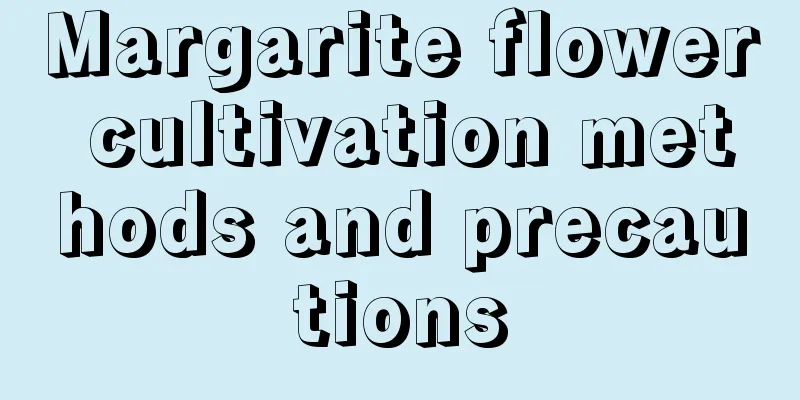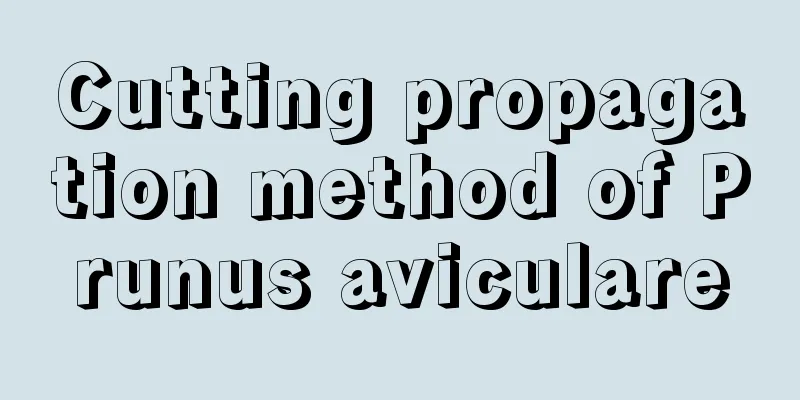Margarite flower cultivation methods and precautions

1. Maintenance methods1. Temperature: Marguerite likes warmth, preferably between 20 and 25 degrees. In addition, it does not like high temperatures. In very hot conditions, its leaves may turn yellow or even fall off. So, try not to exceed 30 degrees. Also, its cold tolerance is not very good, so try to keep it above ten degrees. 2. Light: Marguerite is a positive plant. It can grow and bloom better if sufficient light is provided. However, try to avoid too strong light, otherwise the leaves will be burned. 3. Watering: Marguerite is a plant that is very afraid of waterlogging. Waterlogging is not acceptable and will cause serious damage to it. Therefore, the soil can be in a semi-wet state at ordinary times. In addition, less watering is needed in winter, especially when the temperature is not suitable. 4. Fertilization: The demand is not much, as the Marguerite flower is very adaptable. Generally speaking, once a month or two months is enough. If it is growing vigorously, then it is okay not to apply fertilizer. 2. Breeding techniques1. Reproduction: Margarite reproduction is very simple and has a very high success rate. It is often propagated by cuttings. Sandy soil plus perlite, base fertilizer, etc. can be used as the matrix. Choose suitable branches as cuttings. After insertion, the temperature should be between 15 and 22 degrees. However, be careful not to breed during the rainy season. 2. Pruning: The first step is to prune the branches and leaves, mainly the dense and long branches. In addition, if it is used as an ornamental plant, its shape needs to be repaired. Furthermore, after flowering, the dead branches and flowers need to be pruned. 3. Problem diagnosis and treatment1. Disease: Leaf blight often occurs, which is the main threat to leaves. It is caused by bacteria and needs to be treated with chlorothalonil. There may also be "powdery mildew", which will cause a certain degree of harm to leaves and flowers, and can also be treated with chlorothalonil. 2. Pests: Common pests include aphids, which reproduce in large numbers. It can be controlled by fumigation or spraying. IV. Other issues1. Toxicity: It is non-toxic, there is no record of it being toxic, and it is harmless. 2. Flower language: Margarite flowers have many flower languages, all of which have good meanings. There are four main ones, one is "anticipated love", one is "satisfaction", the third is "pride", and the last one is "joy". |
<<: Basil cultivation methods and precautions
>>: The cultivation methods and precautions of magnolia
Recommend
The cultivation prospects and key points of cultivation technology of straw mushroom
Straw mushroom is a common edible fungus . It is ...
If you can’t do this when growing flowers in summer, your flowers will be doomed!
1. Direct water spray This method is more suitabl...
Can purple-leaf plum be planted in the yard?
Can purple-leaf plums be planted in the yard? Pur...
Complete guide to propagating creeper!
Seed propagation Seed selection There are many wa...
Pecan planting conditions Climate and environment of the planting area
Pecan Planting Conditions Pecan is a semi-sun pla...
How to care for the newly bought desert rose
1. Inspection Since the plant may be damaged to a...
Is cinnamon the same as cassia bark? What is the price of cinnamon?
1. The two are different 1. Different appearance:...
How to prune pine red plum
When to prune pine red plum It is usually more ap...
What should I do if the roots of my green radish are rotten? Is it okay not to repot it?
1. Solution 1. Cut off rotten roots: Root rot is ...
Can the bird's nest be hydroponically cultivated? How to hydroponically cultivate the bird's nest
Can the bird's nest be hydroponically cultiva...
When do orchids bloom?
Orchid is a traditional famous flower in China, k...
Lavender pests and diseases
Diseases Lavender leaf spot Symptoms for one-year...
What are the reasons why cherry blossoms do not bloom?
1. Improper fertilization If you want the cherry ...
How to prune grape vines?
Grapevine pruning is an important part of vineyar...
Can agave survive outdoors in winter? How to grow agave in winter
1. Can you survive outdoors in winter? It is slig...









